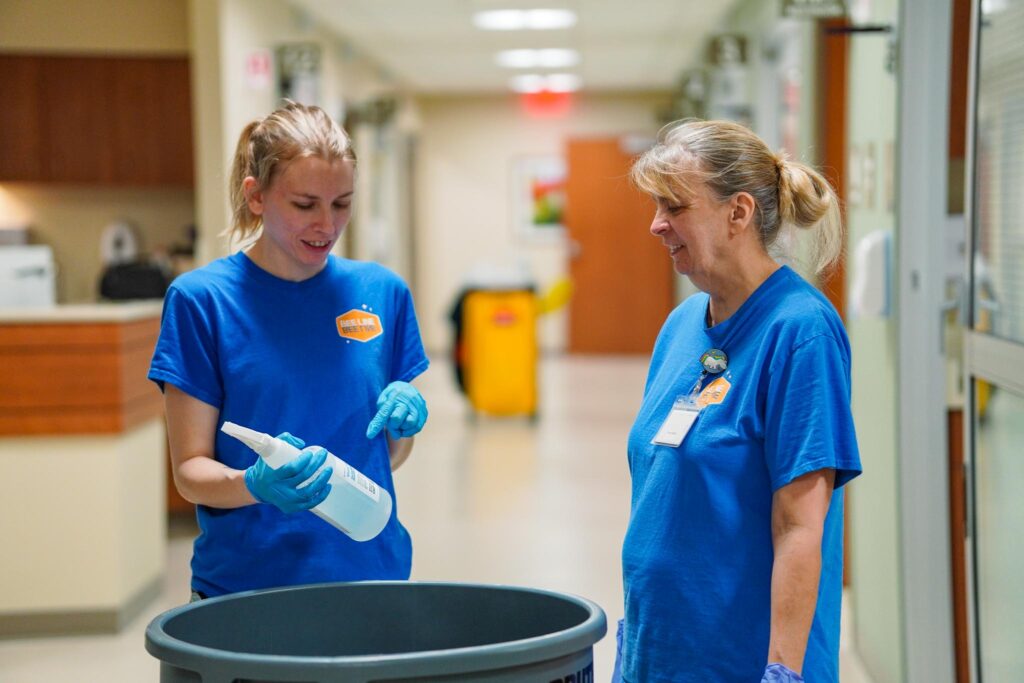Undergoing any type of surgery comes with risks. Whether a patient is in need of a life-saving procedure or they’re opting for an elective surgery to improve their quality of life, they’re at risk of infection, complications, and more. Although some unexpected occurrences may be out of your surgical team’s control, there are important steps to take to maximize each patient’s outcome and minimize risk.
All surgical facilities need to be cleaned, sanitized, and ready for use at a moment’s notice. Surgical tools also need to be sterilized, surgeons and assistive teams need to wear the proper PPE, and the operating room needs to be cleaned between each use.
Regardless of if you have procedures in place or you follow internal protocol, there may be a few areas that are overlooked. To help you keep your patients healthy while simultaneously minimizing the risk of malpractice issues, consider cleaning some of the following areas in your operating room that you may have missed in the past.
The Basics of Operating Room Cleaning
Operating rooms require a completely sterile environment in order to protect the health and safety of patients before, during, and after the procedure. As a general rule of thumb, they should be tackled in order from clean to dirtier areas and from high to low, as this helps to minimize the spread of germs and other microorganisms. Individuals who are responsible for cleaning operating rooms should also be dressed in the appropriate personal protective equipment. Luckily, when you partner with Bee Line, you won’t need to worry about this. We offer on-demand cleaning services to help you take care of messes in between operating room procedures.
Medical equipment also needs to be properly sterilized to the highest safety standards to reduce the risk of any HAIs or infectious diseases. This means taking three distinct steps: cleaning, disinfecting, and sterilizing. This is the only way to eliminate the risk of cross-contamination. Bee Line is one of the only medical-grade cleaning companies in the region and always works to meet the highest standards of cleanliness. We bring dedication and rigor to every space we service—especially surgical sites and operating rooms. This gives you the peace of mind you need when working with patients of every age.
Common Areas That Are Overlooked When Cleaning Operating Rooms
Cleaning an operating room may seem like a no-brainer. Start tackling the areas that look dirty, sanitize anything that was touched by a patient or surgeon, and move on to the next. But what if we told you that it’s highly likely that you’re doing it wrong? Though no one wants to get that kind of feedback, there are a few areas that go overlooked when cleaning operating rooms. Most commonly, these include the following:
1. The Floors
No surgical operation takes place on the floor, nor are surgical instruments that have been dropped simply picked up, wiped off, and continued to be used. However, that doesn’t mean you should neglect the floor during cleanings. The floor of an operating room can harbor dangerous germs and pathogens that are kicked up with movement or footwork. Plus, bodily fluids and other types of hazardous materials can easily wind up on the ground during surgery. If not addressed in a timely (and effective) manner, healthcare workers can step on them, slip, or track them elsewhere in the hospital. This is bad news all around.
Instead, give your floors as much attention as you do to any other part of the operating room. Take the time to use the appropriate detergents and disinfectants that will eradicate germs and pathogens, clean up bodily fluids, and kill infectious diseases. Bee Line uses innovative products and techniques to keep your OR safe.
2. The Ceiling
After thinking about the repercussions of ignoring the floor, it becomes an understandable area to focus on. But what about the opposite surface in the room? It’s pretty easy to make the assumption that your ceiling is clean, especially when you’re working in a controlled environment, but that’s not always the case. In fact, the ceiling of operating rooms can quickly accumulate germs, dust, and other particularly dangerous contaminants. The longer it’s left untouched, the heavier it becomes. This increases the risk of having pathogens fall into the operating field during a surgery.
3. Inside and Outside of Cabinets
Some operating rooms are equipped with cabinets, while others are completely clear of any storage capacity. If you have storage space in your OR, you’ll need to add cabinets to your cleaning checklist. This should include everywhere inside of, around, on top of, etc. Every inch of the cabinets should be cleaned in order to optimize patient safety, especially if people are accessing items within them during a surgical procedure.
4. Hard-to-Reach Areas
Hard-to-reach areas include corners, nooks and crannies, and behind any medical equipment or furnishings in an operating room. Although there are specific protocols in place for cleaning the actual equipment, the space surrounding (or underneath) shouldn’t be ignored. Items should be regularly moved so that dirt, grime, or other contaminants that may have migrated during a procedure are addressed in a timely manner. The more thorough you are, the better. To help bring a certain level of rigor into our cleaning practices, Bee Line has our very own training center that includes an OR, exam room, and bathroom to conduct mock cleanings, simulations, and trainings in. This allows us to be prepared for the full terminal cleaning protocols that will keep your medical facility safe and ready for use.
5. Biohazard Disposal Sites
There should be on-site procedures for handling and disposing of hazardous material, especially in an operating room. In doing so, you help keep your staff and patients protected. The disposal sites for these types of biohazards should also be regularly cleaned, even if you have protective coverings or materials in place. It never hurts to over-sterilize these areas, as even tiny, microscopic droplets can cause issues. When cleaning, the proper personal protective equipment and safety protocols should always be carried out. Anything that may pose a biohazard threat should be disposed of according to the health and safety regulations of the material.
6. Areas for Medications
Finally, any area where you store medications or surgical tools shouldn’t be forgotten, even if they weren’t accessed while the surgery was taking place. You can never be too safe when it comes to surgical cleaning, which is why it’s best to partner with a medical-grade cleaning professional like Bee Line.
Cleaning an operating room isn’t the same as cleaning your board room, so don’t treat it that way. Surgical facilities require germs, bacteria, and pathogens to be completely eradicated in order to facilitate a smooth, safe procedure. To help, Bee Line offers comprehensive operating room and surgical cleaning to make sure that your OR is ready to go regardless of the time of day. There’s a reason our team is trusted by America’s largest healthcare networks, and we’re happy to bring our standards of cleanliness into your healthcare facility. Our team will make sure that your operating room is cleaned and ready to go, from the ceiling to the floor and everywhere in between. To learn more about our process, connect with one of our team members today. You can reach Bee Line by calling 312-BEE-LINE or by filling out our contact form online.
About The Author
Julio Alvarez
author
Julio is a true veteran to the industry, rising through the ranks of the cleaning business and finding a home at Bee Line since 2007. When he’s not busy expertly leading his troops, you can find Julio playing soccer and spending time with his wife, 3 adorable boys, and a goldfish named Flipper! He has a soft spot in his heart for stuffed pizza with salad, and is a Cubs fan through and through. His favorite part of working at Bee Line is the strong teamwork.




